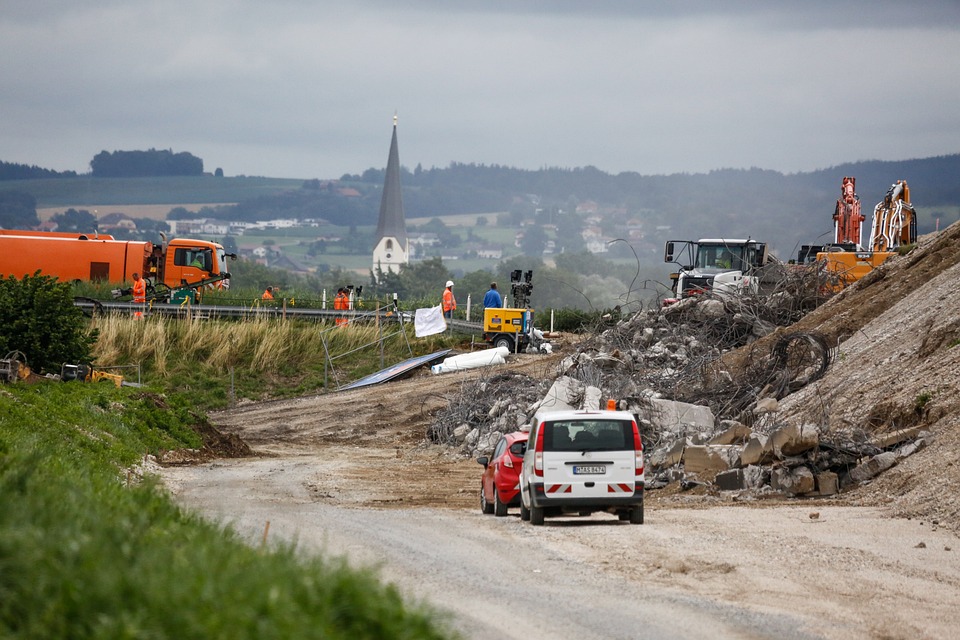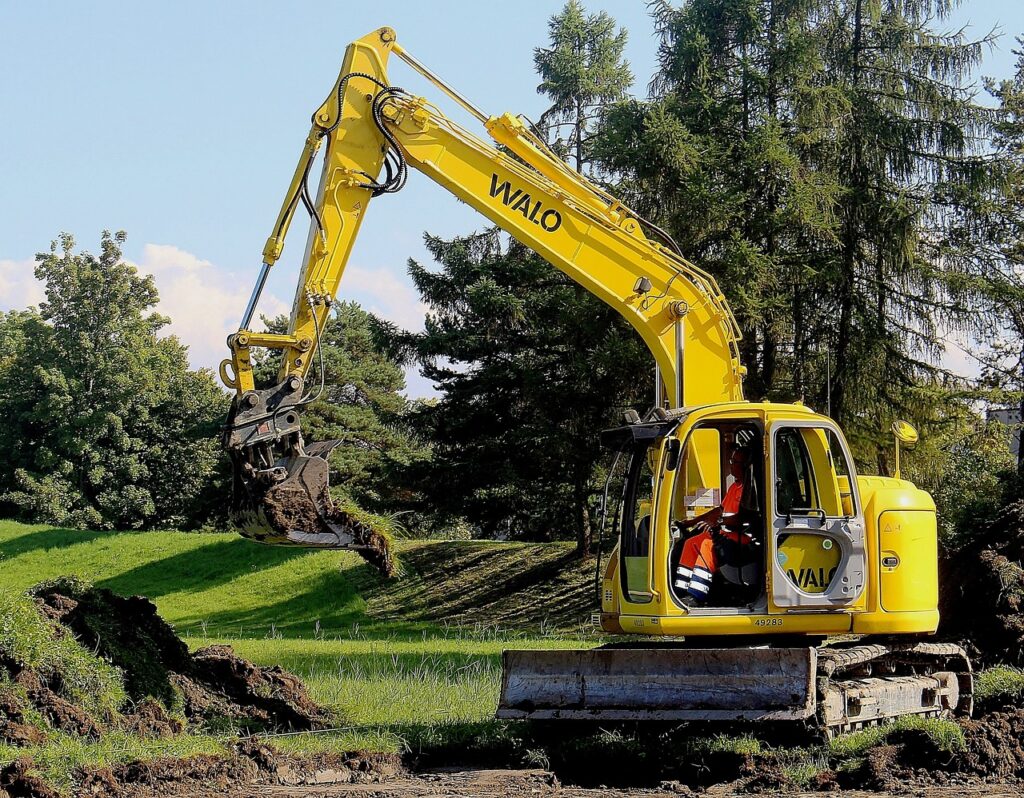Incident Investigation
Scenario-Incident investigation
” A worker accessed a confined space sewerage manhole, having completed all the necessary training and secured a valid confined space permit. All required precautions, such as atmospheric testing and the use of Personal Protective Equipment (PPE), were ostensibly in place. The worker entered the manhole confidently, prepared to perform the task at hand. However, after approximately five minutes inside the confined space, the worker suddenly became unconscious. The on-site emergency response team was promptly alerted and initiated rescue efforts. Despite their immediate and continuous attempts to extract and revive the worker, they were unable to do so. The worker remained unconscious within the manhole, unresponsive to the rescue attempts, until external emergency services arrived at the scene. Upon their arrival, the external team took over the rescue operation, providing professional first aid. They administered CPR and other necessary medical interventions. After about 15 minutes of dedicated efforts by the external emergency team, the worker regained consciousness, underscoring the importance of having skilled external emergency services available for such critical incidents.
“
What might be the causes of this incident?
Immediate Causes ( Incident Investigation)
Immediate causes are direct factors leading to the incident:
Inadequate Ventilation

Ventilation in confined spaces is crucial to ensure a continuous supply of fresh air and to remove hazardous gases. In this scenario, insufficient airflow failed to clear out toxic gases, creating a dangerous atmosphere for the worker.
Toxic Atmosphere
The presence of toxic gases like hydrogen sulfide or methane within the confined space poses severe health risks. These gases can accumulate quickly, especially in poorly ventilated areas, leading to immediate health issues such as respiratory distress or unconsciousness. Continuous atmospheric monitoring is essential to detect these gases before workers enter the space.
Oxygen Deficiency
Low oxygen levels can occur due to various factors, including displacement by other gases, chemical reactions, or biological processes. An oxygen-deficient atmosphere can cause workers to experience dizziness, confusion, and unconsciousness within minutes. Ensuring adequate oxygen levels through continuous monitoring and ventilation is critical.
Faulty Gas Detection Equipment

Rapid Onset of Symptoms
Gas detectors that are malfunctioning or incorrectly calibrated can provide false readings, giving a false sense of security. Regular calibration and maintenance of gas detection equipment are essential to ensure accurate readings and timely detection of hazardous gases.
High concentrations of toxic gases can cause sudden and severe symptoms, such as loss of consciousness, which leave little time for escape or rescue.
Personal protective equipment (PPE) must be used correctly and be adequate for the specific hazards present. Incorrect use, such as improperly fitting masks or inadequate respiratory protection, can render PPE ineffective. Proper training on the correct use of PPE is essential.
Lack of Continuous Monitoring
Failure to continuously monitor atmospheric conditions can lead to undetected changes in the environment, such as a sudden increase in toxic gas levels. Continuous monitoring with alarms can provide immediate warnings, allowing workers to evacuate before conditions become lethal.
Inadequate Communication
Effective communication between the worker inside the confined space and the safety team outside is vital. Lack of communication can delay the response to any signs of trouble. Using reliable communication devices and establishing clear communication protocols can help ensure timely assistance.
Delayed Emergency Response
Slow reaction time in initiating rescue efforts can worsen the outcome of an incident. Quick and efficient response procedures must be in place, including trained personnel and readily available rescue equipment, to minimize the time a worker remains in a hazardous environment.
Insufficient Rescue Equipment
Without proper rescue equipment, such as harnesses, lifelines, and retrieval systems, extracting an unconscious worker from a confined space can be challenging and time-consuming. Ensuring that all necessary rescue equipment is available and in good working condition is crucial for effective emergency response.
Underlying Causes-Incident investigation


Incomplete Hazard Assessment
The hazard assessment process may have failed to identify all potential atmospheric hazards, leading to inadequate preparation. A thorough assessment should consider all possible risks, including chemical, physical, and biological hazards.
Inadequate Training
Both the worker and the emergency team may not have received comprehensive training on confined space entry and rescue procedures. Regular, detailed training sessions are necessary to ensure everyone is well-prepared for emergencies.
Equipment Maintenance
Regular inspection and maintenance of gas detection and ventilation equipment are essential to ensure their reliability. Equipment failures due to poor maintenance can lead to dangerous situations.
Failure to Follow Protocols
Safety protocols are designed to prevent incidents, but they must be strictly adhered to. Any deviation from established protocols can increase the risk of accidents. Regular audits and enforcement of protocols are necessary.
Lack of Supervision
Insufficient oversight during confined space entry can lead to unsafe practices. Supervisors must be present to ensure that all safety procedures are followed correctly.
Ineffective Permit System
The confined space permit process should be thorough and comprehensive. Any shortcomings in the permit process, such as missing checks or approvals, can compromise safety. Reviewing and improving the permit system can help address these issues.
Complacency
Overconfidence due to frequent successful entries without incident can lead to complacency. Workers and supervisors must remain vigilant and treat each entry with the same level of caution and adherence to safety protocols.
Communication Breakdown-Incident investigation
Inadequate communication channels between team members can lead to misunderstandings and delays in response. Establishing clear communication protocols and using reliable communication devices can mitigate this risk.
Insufficient Emergency Drills
Regular, realistic emergency response drills are necessary to ensure that all team members are prepared to act quickly and effectively in an emergency. Drills help identify any weaknesses in the emergency response plan.
Oxygen Deficiency
Low oxygen levels can occur due to various factors, including displacement by other gases, chemical reactions, or biological processes. An oxygen-deficient atmosphere can cause workers to experience a range of adverse health effects. Initially, workers may feel lightheaded, dizzy, or disoriented, which can impair their ability to think clearly and respond to situations effectively. As oxygen levels drop further, they may experience difficulty breathing, rapid heart rate, and extreme fatigue. In severe cases, workers can lose consciousness within minutes, leading to potentially fatal outcomes if they are not promptly removed from the environment. The rapid onset of these symptoms means that workers might not have enough time to recognize the danger and take protective actions, making low oxygen levels particularly hazardous in confined spaces.
Root Causes-Incident investigation
Poor Safety Management System
An inadequate safety management system fails to identify and mitigate risks effectively. Implementing a robust safety management system with clear procedures and regular evaluations is crucial for preventing incidents.
Lack of Safety Culture
A workplace culture that does not prioritize safety can lead to unsafe practices and attitudes. Promoting a strong safety culture through leadership, training, and incentives can improve overall safety.
Insufficient Emergency Plans
Emergency plans must be detailed and specific to confined space rescues. Incomplete or generic plans can lead to ineffective responses. Developing comprehensive, scenario-specific emergency plans is necessary.
Inadequate Hazard Identification Procedures-Incident investigation
Thorough procedures for identifying hazards are essential. Any gaps in these procedures can leave potential risks unaddressed. Regular reviews and updates of hazard identification procedures can help ensure they remain effective.
Insufficient Training Programs

Training programs must be comprehensive and regularly updated to cover all potential hazards and emergency response procedures. Investing in continuous training can help maintain high safety standards.
Resource Allocation
Adequate resources must be allocated for safety equipment, training, and personnel. Insufficient resources can undermine safety efforts. Ensuring proper budget allocation for safety is critical.
Policy Gaps
Gaps in safety policies and procedures can lead to unsafe practices. Regular reviews and updates of safety policies can help close any gaps and improve safety.
Ineffective Leadership
Management must enforce and prioritize safety standards. Ineffective leadership can result in a lack of adherence to safety protocols. Strong leadership commitment to safety is essential.
Regulatory Compliance
Failure to comply with all relevant safety regulations and standards can lead to legal issues and unsafe conditions. Regular audits and compliance checks can ensure adherence to regulations.
Risk Assessment Flaws
Inadequate risk assessment methodology or implementation can leave potential hazards unaddressed. Improving risk assessment processes through training and methodology updates can enhance safety.
Responsibility-Incident investigation

Responsibility Breakdown
Safety Officer
The Safety Officer is responsible for ensuring that all safety protocols and measures are adequately implemented and continuously monitored. This includes conducting thorough risk assessments, verifying that all safety equipment is functional and available, and ensuring that workers are trained and aware of safety procedures. The Safety Officer should also oversee the implementation of emergency plans and coordinate with the emergency team to ensure readiness.
Management
Management is responsible for providing the necessary resources, training, and equipment required to maintain a safe working environment. This includes allocating budget for safety measures, ensuring that comprehensive training programs are developed and delivered, and prioritizing safety in operational decisions. Management must also ensure that safety policies are enforced and regularly reviewed for effectiveness.
Worker
The individual worker is responsible for following all safety protocols, using personal protective equipment (PPE) correctly, and adhering to the guidelines specified in the confined space permit. Workers must also participate in training sessions and remain vigilant to the hazards present in their working environment. They should report any unsafe conditions or incidents immediately.
Emergency Team-Incident investigation
The emergency team is responsible for executing effective and timely rescue operations. This includes regular training in confined space rescue, maintaining and being familiar with rescue equipment, and having a clear understanding of the emergency response plan. They must be able to act quickly and efficiently in the event of an emergency.
Training Department
The training department is responsible for developing and providing comprehensive training programs that cover all aspects of confined space work, including hazard identification, use of PPE, emergency procedures, and safe work practices. The training programs should be regularly updated to reflect current best practices and regulatory requirements.
Equipment Maintenance Team
This team is responsible for ensuring that all safety equipment, such as gas detectors, ventilation systems, and PPE, are regularly inspected, maintained, and calibrated. They must keep accurate records of maintenance activities and promptly address any equipment malfunctions or deficiencies.
Supervisors
Supervisors are responsible for monitoring adherence to safety protocols on site. They must ensure that workers follow the safety procedures, use the correct PPE, and adhere to the confined space permit requirements. Supervisors should also conduct regular safety inspections and report any non-compliance or safety concerns to the Safety Officer.
Permit Issuer
The permit issuer is responsible for ensuring that the confined space entry permit process is thorough and comprehensive. This includes verifying that all pre-entry conditions are met, assessing the hazards, ensuring that appropriate controls are in place, and confirming that all personnel are trained and equipped for the task.
Safety Committee-Incident investigation
The safety committee is responsible for reviewing and updating safety policies regularly. This includes analyzing incident reports, conducting safety audits, and recommending improvements to safety procedures. The committee should also facilitate communication between management and workers on safety issues.
Regulatory Bodies
Regulatory bodies are responsible for enforcing compliance with safety standards and regulations. They conduct inspections, provide guidelines, and may impose penalties for non-compliance. Regulatory bodies also play a role in educating employers and workers about best practices and legal requirements related to workplace safety.
Overall Responsibility for the Incident
While responsibility for safety is shared among various parties, the overall responsibility for the incident ultimately lies with Management. Management has the overarching duty to ensure a safe working environment by providing the necessary resources, enforcing safety policies, and fostering a culture of safety within the organization. Management must ensure that all other parties (Safety Officer, workers, emergency team, training department, equipment maintenance team, supervisors, permit issuer, safety committee, and regulatory bodies) have the support and resources they need to fulfill their responsibilities effectively. This includes addressing any deficiencies in the safety management system and taking corrective actions to prevent future incidents.
Prevention Measures to Prevent Similar Incidents-Incident investigation

Enhanced Training Programs
Comprehensive training programs should be developed and implemented for all workers and emergency teams involved in confined space work. Training should cover hazard recognition, proper use of personal protective equipment (PPE), emergency response procedures, and safe work practices. Regular refresher courses and hands-on simulations should be conducted to ensure that workers remain competent and confident in handling confined space tasks. Training should also be tailored to address specific hazards associated with sewerage manholes, such as toxic gas exposure and oxygen deficiency.
Regular Equipment Maintenance
A rigorous maintenance schedule for all safety equipment is crucial. Gas detectors, ventilation systems, PPE, and communication devices should be inspected, tested, and calibrated regularly to ensure they function correctly. Maintenance logs should be kept, and any defective equipment should be promptly repaired or replaced. Routine maintenance checks can prevent equipment failures that could lead to hazardous situations.
Continuous Monitoring
Continuous atmospheric monitoring is essential to detect any changes in the environment within confined spaces. This includes using fixed and portable gas detectors to monitor levels of oxygen, toxic gases (such as hydrogen sulfide and methane), and other potential contaminants. Alarms should be set to alert workers immediately if dangerous levels are detected, allowing for timely evacuation and intervention.
Effective Ventilation
Proper ventilation systems should be employed to ensure a safe air quality within confined spaces. This involves using mechanical ventilation to supply fresh air and remove contaminated air, maintaining adequate airflow to dilute and expel hazardous gases. Ventilation systems should be designed to address the specific requirements of the confined space and should be tested before and during entry to ensure effectiveness.
Realistic Emergency Drills
Regular and realistic emergency response drills should be conducted to prepare workers and emergency teams for potential incidents. These drills should simulate various scenarios, such as a worker becoming unconscious due to toxic gas exposure. Drills help identify gaps in the emergency response plan, improve coordination among team members, and ensure that everyone knows their role and responsibilities in an emergency.
Strict Protocol Adherence
Enforcing strict adherence to all safety protocols and procedures is critical. This includes following the confined space entry permit process, using appropriate PPE, and adhering to safe work practices. Supervisors and safety officers should regularly monitor compliance, conduct audits, and take corrective actions when deviations are identified. A zero-tolerance policy for non-compliance should be communicated and enforced.
Comprehensive Hazard Assessment
Conducting thorough hazard assessments before each confined space entry is essential to identify and evaluate potential risks. This includes assessing the atmosphere for toxic gases, oxygen levels, and other environmental hazards. The assessment should also consider the physical conditions of the confined space, such as structural integrity and the presence of biological hazards. The findings should inform the development of a detailed entry plan with appropriate control measures.
Improved Communication
Establishing and maintaining clear communication channels is vital for coordinating confined space activities and responding to emergencies. This involves using reliable communication devices, such as radios, and implementing a communication protocol that ensures constant contact between workers inside the confined space and the safety team outside. Regular check-ins and emergency signals should be part of the communication plan.
Resource Allocation
Ensuring sufficient resources are allocated for safety measures and equipment is fundamental. This includes budgeting for high-quality PPE, advanced gas detection and ventilation systems, and training programs. Adequate funding should also be allocated for regular maintenance and emergency response equipment. Management must prioritize safety investments to mitigate risks effectively.
Safety Culture Development
Fostering a strong safety culture within the organization involves promoting safety as a core value. This can be achieved through leadership commitment to safety, encouraging worker participation in safety initiatives, and recognizing safe behaviors. Regular safety meetings, open communication about safety concerns, and continuous improvement of safety practices are essential components. A strong safety culture ensures that all workers take ownership of their safety and the safety of their colleagues.
By implementing these prevention measures, organizations can significantly reduce the risks associated with confined space work, protect their workers, and ensure a safer working environment.
Conclusion-Incident investigation

In conclusion, the incident involving the worker’s unconsciousness in the confined space sewerage manhole underscores the critical importance of proactive safety measures in high-risk environments. By systematically identifying hazards, evaluating risks, and implementing control measures, safety officers can significantly reduce the risks associated with confined space work. However, it is crucial to recognize that addressing the immediate, underlying, and root causes of such incidents is paramount to preventing their recurrence. Enhanced training programs, regular equipment maintenance, continuous monitoring, and a strong safety culture are essential components of a comprehensive safety strategy.
Until the root causes, such as poor safety management systems, lack of safety culture, inadequate hazard identification procedures, and insufficient training programs, are effectively addressed, the risk of similar accidents occurring in the future remains high. Therefore, organizations must prioritize safety at all levels, invest in robust safety management systems, and foster a culture of accountability and continuous improvement. Only by addressing these fundamental issues can we create safer work environments and prevent tragic incidents like the one described from happening again.


